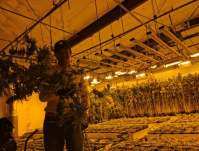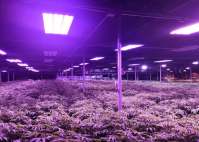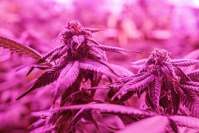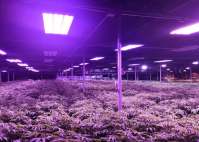The light quality of LED grow lights is determined by the chip, and the quality of the domestic chips used in the current LED grow lights is not good enough. You can only choose imported chip-encapsulated LED lamp beads to produce LED grow lights, which leads to the production of lamps. The cost is high. But because of its accurate light quality and can be adjusted artificially, the photosynthetic radiation per unit power consumption is very high, the effect of plant light supplement is very good, the operating cost is very low and many other advantages.
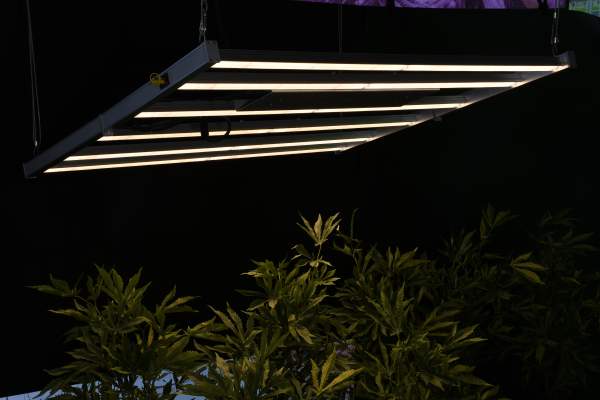
The effect of LED grow light quality on the growth of crop roots, light can pass through the internal light environment, through the regulation of photoreceptors, and regulate its growth and development. Although there is no direct light, it responds differently to different light qualities. The blue light of LED grow lights is conducive to the growth and development of plant roots. Blue light can increase the root vigor, total absorption area and active absorption area of seedlings. The cultivated rice seedlings were irradiated with the blue light of the LED grow light, and it was found that the protein content accumulated in the root system of the rice seedlings was high, the non-protein nitrogen content was low, the ratio of protein nitrogen to total nitrogen was high, and the total nitrogen content was also high. The synthesis of nitrogen compounds in the root system of the seedlings, the production of protein accumulates in the root system. Seedling raising based on the blue light effect of LED grow lights on crop roots has been applied by reproducers.
The effect of LED grow light quality on leaf growth. Leaf is the main organ for photosynthesis of plants. The change of LED grow light quality directly affects leaf growth. According to reports, the leaf area of birch seedlings grown under blue light is twice that of seedlings under red light, and the area of leaf epidermal cells, palisade tissue, sponge tissue and functional chloroplasts are larger than those under white and red light. The rice seedling experiment has the same result. Compared with white light, blue light can obviously promote the growth of rice seedling leaves, increase the angle between the leaf and the sheath, and make the leaves flat; while the effect of red light is opposite, it inhibits the increase of leaves. Wide growth. However, some people think that the compound light is more conducive to the growth and development of the leaves. The leaf area of lettuce under the combination of red, blue, and green light is extremely large, followed by white light, and red and blue light. Studies have also shown that increasing the proportion of LED red light in the compound light has a certain promotion effect on the increase of tobacco leaf area, but the leaf weight of the leaf is reduced, and the leaf becomes very thin.
The influence of the light quality of the LED grow light on the regulation of the stoma. The stoma is the channel for water and oxygen to enter and exit, and the gateway for plant photosynthesis. Stomatal movement is regulated by many external environmental factors and internal factors, of which light is an important regulating factor. It is found in both monocot and dicot plants that the blue light of LED grow lights can promote the opening of stomata. The principle that the blue light of LED grow lights promotes the opening of stomata, that is, the blue light activates the plasma membrane ATPase to continuously pump protons to form a transmembrane electrochemical gradient ,
The effect of the light quality of the LED grow light on the growth of crop stems. Different wavelengths of light can regulate the growth of the stems by affecting the level of endogenous hormones in the plant. Blue-violet light can increase the activity of indole acetic acid oxidase and reduce the level of auxin, thereby inhibiting the growth of plants. At the molecular structure level, red light can promote cell elongation, while blue light has the opposite effect. In general, the long-wavelength LED grow light red light promotes the elongation of the stem, while the short-wavelength light inhibits the elongation of the stem.
The light quality ratio of LED grow lights is different for different plants. The ratio of some plants is listed below:
(1) Lettuce: The light sources of red and blue light 6:1 and 7:1 respectively for planting and seedling cultivation are the most suitable for its growth.
(2) Leek: The ratio of plant height, stem thickness, leaf width and other mass ratios of leeks under the red/blue 7:1 treatment was significantly higher than other treatments.
(3) Cucumber: 7:2 is the best ratio of red and blue light for the growth of cucumber seedlings. And the growth period 7:1 is the best ratio of red and blue light.
(4) Strawberry, tomato: red and blue light 9:1 is good for full fruit and rich nutrition.
(5) Holly: Red and blue light are arranged according to the ratio of 8:1. Holly grows best, is strong and has a very developed root system.
(6) White radish: the most suitable light quality for growth: the ratio of red and blue is 8:1.
(7) Sprouts: The effect is the most obvious with the ratio of red, green and blue light of 6:2:1.
(8) Green vegetables and water spinach: 7:1 is the best ratio of red and blue light for the growth of green vegetables and water spinach leaves.
(9) Calla lily: For growth conditions, the ratio of 6:2 between red and blue light is the best.
(10) Lettuce: The ratio of red and blue light is 9:1, which is beneficial to the growth of lettuce.
(11) Anthurium andraeanum scorching sun: Comprehensive analysis, 7:3 red and blue light treatment is better, which is conducive to morphology, root growth and dry matter accumulation.
(12) Dendrobium officinale: Red and blue light 7:3, the proliferation effect is the best; at 6:4, it is more conducive to photosynthesis and material accumulation of seedlings.


